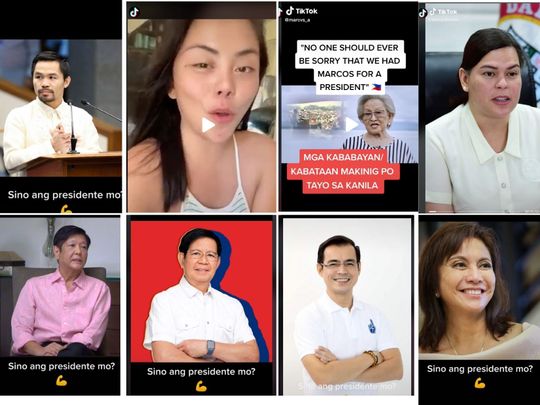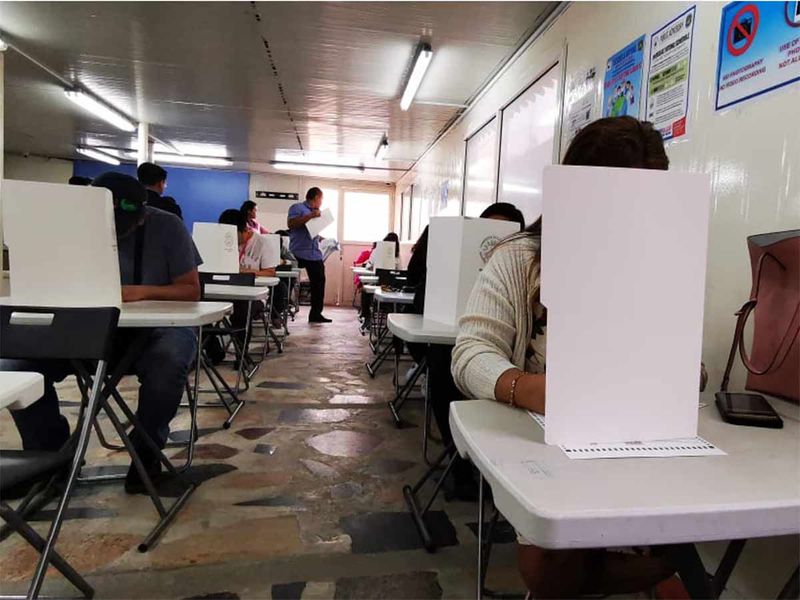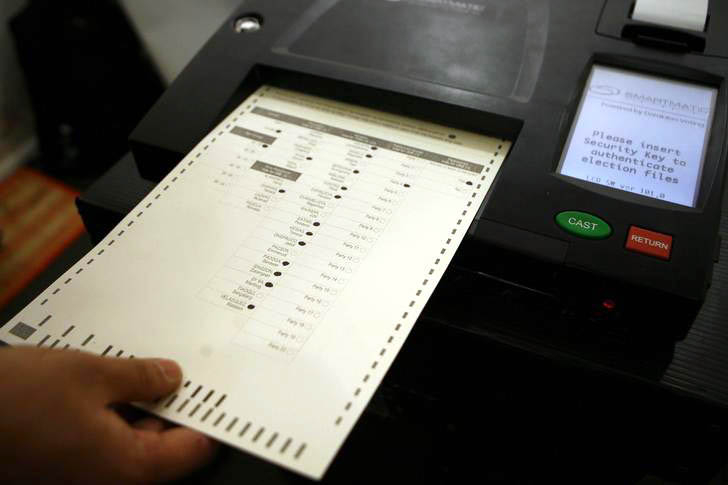
Highlights
- There’s a festive-like ring to every Philippine election, which is also often marked by widespread vote-buying and violence.
- In a hyperconnected COVID era, social media has become the new battleground.
- The best campaigns, and biggest ad spenders, would have a much wider potential access to the crucial age 18-40 crowd, the bulk of 63 million Filipino voters registered for the May 2022 vote.
- But there are the savvy outliers, campaigners and professional trolls competing for increasingly scarce attention span, which is why Tiktok works.
MANILA: Filipinos love elections to a fault. No strongman today can deprive the 110 million islanders of the joys and pains of this democratic slugfest. But what of the growing primacy of social media?
Pundits say the upcoming 2022 vote will be an election like no other. Up to 52% of 63 million registered voters belong to the social media-savvy 18-40 age group. Candidates and their supporters have an unmatched ease in taking their message out to woo this crucial voting bloc via platforms like Tiktok, Facebook, and Youtube. Yet there's also the challenge of mastering the algorithms of each, in addition to the still-unknown effect of brute-force paid ads.
It's welcomed by many campaigners with a mix of excitement and dismay. Here's the lowdown on the upcoming vote:
When is the last day of filing of candidacy?
Friday, October 8, 2021, is the last day of filing.
When is the last day of filing for substitutions?
November 15, 2021. Political parties and coalitions that field a candidate are allowed to substitute that candidate if the candidate dies, withdraws or is disqualified.
When is the actual day of balloting?
May 9, 2022. For overseas Filipino workers, voting starts much earlier.
17,000
Number of Filipina nurses who left to work overseas in 2019 (mostly the UK, US and the Middle East)How many positions will be contested?
There will be more than 18,000 posts at stake:
- President
- Vice president
- 12 senators
- Party-list seats
- 243 congressional district representatives
- 79 provincial governors and vice governors
- 722 provincial board seats
- 84 city mayors and vice mayors
- 816 city council seats
- 12,308 municipal council seats
18,000
number of positions to be contested during the 2022 pollsWhen is the campaign period?
From March 25 till May 7, 2022.
What’s the role of social media?
It’s unstoppable.
The result: Dr Ong garnered more than 9 million votes — without untold millions of pesos for a traditional campaign to cover the entire length and bread of the Philippines’ 7,640 islands. Among his thousands of followers include overseas Filipino workers, who are among the voters.
He did not make it to the Senate’s magic 12, but garnered more than 9 million votes. Now, he’s running for vice president in the 2022 elections. Now, he has 6.6 million YouTube subscriber, a six-fold jump from three years ago.

A team of academics were deployed in 2019 under the Digital Disinformation Tracker to keep tabs of online conversations on the midterm polls. A key research finding: practically all candidates used various social media platforms to promote themselves. In the upcoming May 2022 vote, this is likely to take a higher pitch.
In the hyperconnected virtual world, campaigning already started years ago. If past elections had been rife with a cocktail of dole-outs of goods, cash and violence, you can now add to that Tiktoks this time.
Some Tiktok messaging examples:
Former Senator Ferdinand "Bongbong" Marcos Jr's campaign
Senator Emmanuel "Manny" Pacquiao
Manila Mayor Francisco "Isko" Moreno Domagoso
Senator Panfilo "Ping" Lacson
Davao City Mayor Sara "Inday" Duterte
Vice President Maria Leonor Leni Robredo
How are officials elected?
Each registered voter is entitled to one vote and can directly vote for the preferred candidate. The voter may split his or her votes between candidates from opposing parties. The candidate with the most votes wins the position.
So a candidate can win even if he does not get a majority of the votes?
Yes. Elected leaders often get only a plurality of votes, instead of a majority. Also, the top leaders — president and vice president — may come from different parties (i.e. President Duterte is from PDP-Laban, and VP Robredo is from the Liberal Party) so they could be at loggerheads for most of their single six-year term.
Does the Philippines have a run-off election or electoral college system?
No. The Philippine has no run-off or electoral college system. It does have a unique party-list system, in which sectoral representatives (mothers, teachers, security guards, etc) can get a seat in the House of Representatives.
$ 1.47 t
World Bank estimate of the Philippine GDP by purchasing power parity — 18th in the world in 2021.Does it have a bipartisan system?
No. Every election is like a free-for-all: There were 79 separate parties registered with the Commission on Elections (Comelec) since 1987.
Does tribalism play a role in the polls?
It shows in the numbers. In 1898, Filipinos declared independence from Spain. The Philippines had 16 presidents since. For the last 121 years, politicians from the main island Luzon (109,965 sq km, where Manila is) tend to dominate national politics.

Out of the 16 president, 12 were from Luzon. Among the 12, seven came from the north, four from central Luzon while the rest are from central islands.
Only one so far, the incumbent President Rodrigo Duterte, is from the main southern island of Mindanao. No executive was ever elected from the east (Bicol/Samar/Leyte).
Within the Luzon regional groupings, there are strong undercurrents of tribalism. Of the 16 heads of the state, only one president was ever reelected — in 1969, Ferdinand Marcos Sr., whose two four-year terms were due to end in 1973 (from 1965). Marcos Sr preempted it by declaring Martial Law in 1972, and ended up ruling for a total of 21 years before being deposed in 1986.
But tribalism, typified by the so-called “solid north”, i.e. the vote-rich Ilocos region, does not always hold water. The rule of Marcos (10th president) was truncated with the help of fellow Ilocano tribesmen, including his own cousin and former No. 2 General, Fidel V. Ramos, who joined a civilian-backed military coup that led to Marcos’ ouster 1986. In the 1992 elections, Ramos eventually became No. 12.
What role does money play in Philippines elections?
Huge. In developed countries, it's the voters and supporters of a candidate or party who give financial support. In the Philippines, it’s the candidates or the party who give money to voters. Voter turnout has been generally high (80 to 85 percent in national elections).
$ 90 b
Php4.506 trillion (about $90 billion) is the national budget the Philippines for 2021 (roughly equivalent to $818 per citizen)Is voting automated?
Elections had been automated since 2010, with results of the national vote being made known almost in real time, or within the same day.
A voting machine automatically counts each ballot as it is fed into it. The results are then printed as the election return and sent electronically to the city or municipal Board of Canvassers.
What about election-related violence?
It’s common. Candidates and their supporters are the usual fatalities. The country has plenty of loose firearms: 5,500 illegal firearms and deadly weapons were confiscated by police in the 2019 mid-term elections.

- 1987: 63
- 1988: 100+ (including 39 local candidates)
- 1992: 15
- 2001: 132
- 2004: 188
- 2007: 156
- 2016: 30
- 2018: 33
- 2019: 20
Sources: PNA, PDI, Friedrich Ebert Stiftung, Centre for Public Impact [https://bit.ly/3Ft7QuQ]





